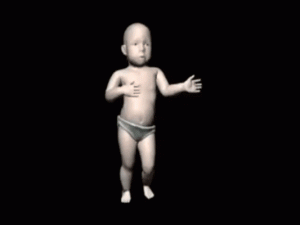From basic text to bright colors and animations, like the popular dancing baby in 1996, to clean-cut crisp design, website design has evolved significantly over the past several decades. It has come a long way since the first website was launched in 1991, influenced by the advancements in technology, user behavior, and cultural trends.
1990s
In the early days of the World Wide Web, website design was focused on functionality rather than aesthetics. Websites were simple, consisting of text and a few basic graphics. The design was limited by the technology available at the time and the slow speed of the internet.
Some websites still opt for this type of simplistic design by choice, for example Craigslist.
2000s
With the advent of broadband and better web development tools, websites became more visually appealing and interactive. Flash animations, drop-down menus, and other dynamic elements became popular. Designers started to experiment with new layouts, typography, and graphics. The focus was on creating a more engaging user experience. Who remembers Yahoo! GeoCities?
2010s
The rise of smartphones and mobile internet usage led to the trend of responsive design and mobile-first website development. Websites became more minimalist, with an emphasis on simplicity, clean lines, and large, high-quality images. Designers started to focus on creating a seamless user experience across different devices and screen sizes.
2020s
With the rise of artificial intelligence and machine learning, websites are becoming increasingly personalized and interactive. Websites are designed to work seamlessly across a range of devices and provide a personalized experience for the user. The focus is on creating an intuitive and enjoyable user experience.
In summary
Website design has evolved significantly over the past several decades. From being simple and functional in the early days to being visually appealing and interactive, and finally, to being personalized and providing a seamless user experience across devices. The design of websites will continue to evolve as technology advances and user behavior changes.




